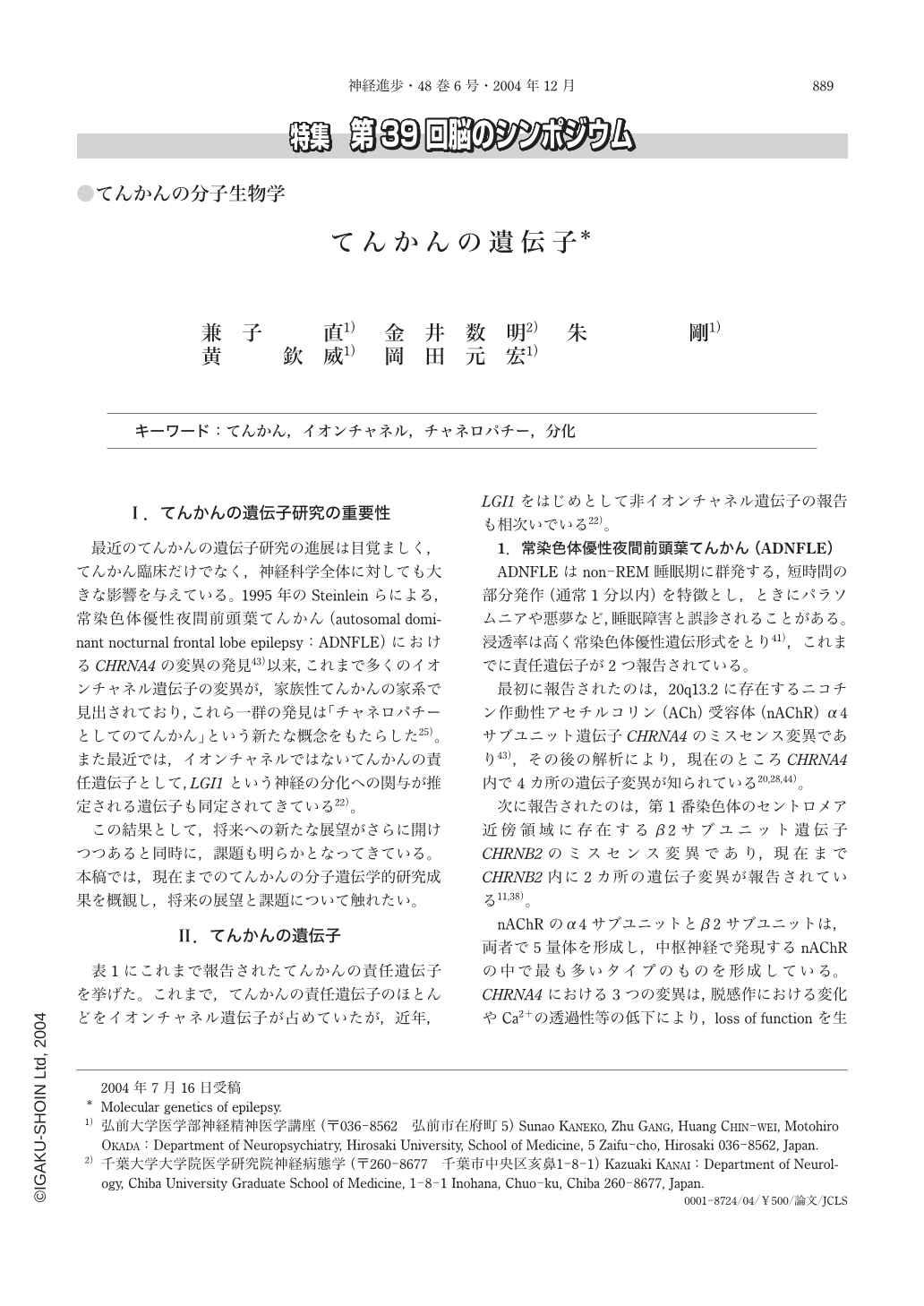Japanese
English
- 有料閲覧
- Abstract 文献概要
- 1ページ目 Look Inside
Ⅰ.てんかんの遺伝子研究の重要性
最近のてんかんの遺伝子研究の進展は目覚ましく,てんかん臨床だけでなく,神経科学全体に対しても大きな影響を与えている。1995年のSteinleinらによる,常染色体優性夜間前頭葉てんかん(autosomal dominant nocturnal frontal lobe epilepsy:ADNFLE)におけるCHRNA4の変異の発見43)以来,これまで多くのイオンチャネル遺伝子の変異が,家族性てんかんの家系で見出されており,これら一群の発見は「チャネロパチーとしてのてんかん」という新たな概念をもたらした25)。また最近では,イオンチャネルではないてんかんの責任遺伝子として,LGI1という神経の分化への関与が推定される遺伝子も同定されてきている22)。
この結果として,将来への新たな展望がさらに開けつつあると同時に,課題も明らかとなってきている。本稿では,現在までのてんかんの分子遺伝学的研究成果を概観し,将来の展望と課題について触れたい。
Marked progresses in the molecular genetics of epilepsy impacted not only on clinical epileptology but also on the neurosciences. Since the discovery of mutation of CHRNA4 in patients with autosomal dominant frontal lobe epilepsy(ADNFLE), many mutations of genes encoding ion channels have been reported in several inherited epilepsy syndromes which led to the concept“Epilepsy as channelopathy”. Recently the mutations of non-channel genes such as LGI1 have been reported in some epilepsy syndromes and other related disorders including febrile seizure.
In spite of these advancement of molecular genetics of hereditary epilepsy, unanswered questions are still remained. The responsible/susceptibility genes to common epilepsy syndromes such as medial temporal lobe epilepsy are still unknown. Even in the rare hereditary epilepsy syndrome, the known responsible genes can explain only a small part of the disease;for example, the mutations of CHRNA4 can be found in a few percent of the patients with ADNFLE.
Furthermore, several new issues are emerging. Some reports revealed that the mutations of KCNQ2 causing benign familial neonatal convulsions(BFNC)resulted in the reduction of M-current and the neuronal hyperexcitability, but the neuronal hyperexcitabilty caused by the mutated KCNQ2 of itself cannot explain self-remission of the disease usually observed in the patients with BFNC. The mutations of SCN1A, which is distributed broadly both in excitatory and inhibitory neurons, have been found both in patients with generalized epilepsy with febrile seizure plus(GEFS+)and in those with severe myoclonic epilepsy of infancy(SMEI), although those two disease are distinct from each other in relation to its clinical symptoms, severity, prognosis, and responses to antiepileptic drugs. Furthermore, both truncation mutations presumed causing the loss of function and missense mutations presumed causing the gain of function have been reported in both diseases. Recent some studies, however, appear to solve a part of the questions.
In this review we try to outline the advancement of molecular genetics of hereditary epilepsy, and to refer to the perspectives of the research in molecular and clinical epileptology.

Copyright © 2004, Igaku-Shoin Ltd. All rights reserved.


